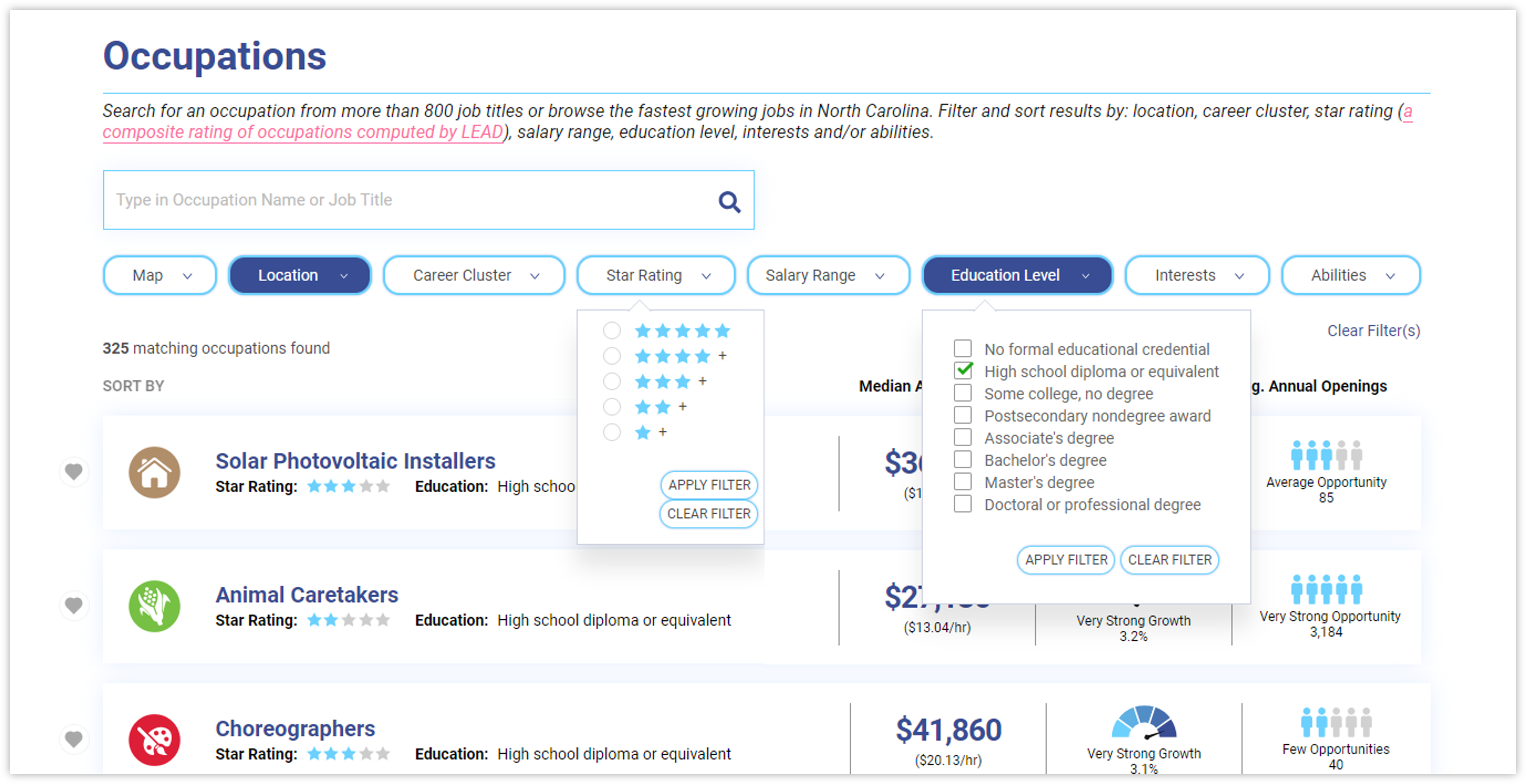Choose Three
Step 2 | 30 minutes
Instructions
So far you've brainstormed on a sheet of paper, talked to at least two adults, and taken advantage of inventories on NCcareers.org to find recommended occupations. In this step you'll learn more about the top occupations you've identified so far and narrow your list down to three.
Reading
In Step One you focused on your personal interests and work values. While it might sound appealing if we could just do work that interests us, the reality is that we also have to do work that people are willing to pay us for. This fact means that you'll also need to think about what type of work is in demand. Work that is in demand is also more likely to provide higher wages.
The terms supply and demand are helpful to keep in mind:
- Supply is the amount there is of something.
- Demand is how much people want it.
If lots of people were offering their time to wash cars (supply), but few people wanted their cars washed (demand), it would be difficult to earn much money washing cars. On the other hand, if few people were offering computer repair services (supply), but lots of people wanted their computers repaired (demand), there might be good opportunity to earn money repairing computers.
Other things that affect this are how hard and expensive it is to learn a job, like becoming a cardiologist. If it's tough to train for, there are fewer people doing it, which usually means higher wages. Also, supply and demand change over time and depending on where you live.
It can become complex rather quickly, and that's why economists at the NC Department of Commerce created the Star Jobs rating system for North Carolina. It gives you an easier way to look at occupations based on their projected growth (demand) and wages. Notice in the image below that you can see the five star ratings (five is best) and how to sort based on Education Level.

Action Item
Narrowing your list:
- Go to NCcareers.org and begin reviewing occupational profiles. Use the Education Level filter and choose "High school diploma or equivalent" so you can review occupations that don't require any college. Three tips: 1) Take a look at the Star Ratings to see what the ten-year prospects are for each occupation, 2) see if you can picture yourself serving your family and community in this occupation, and 3) try the Interests filter that lets you search based on your Interest assessment in Step One.
- Talk to a Career Development Coordinator or school counselor at your high school about your list of options. Ask if there are courses or apprenticeships you can do through your school that will build needed skills or even earn work credentials during high school (like Certified Nursing Assistant).
- Make your plans. For each of your top three options write down three ways you can prepare between now and graduation. You might be able to prepare so that you keep several options open. In addition to high school courses and local apprenticeships, think about online courses through platforms like Coursera, working or starting your business part-time, or volunteering to gain skills.
Additional Resources and Tips
For Students
Most of the career exploration resources in these action items are on NCcareers.org, but if you'd like to take a personality inventory or an assessment that explores the most effective ways for you to learn, try the "Personality" and "Learning & Productivity" assessments in the Learn About Yourself section of CFNC.org.
For Parents
- Consider talking with your student about lessons you've learned from your experiences in different jobs or running your own business.
- Think about how you might help your student do some online research or make job-related connections through family and friends.
- If your student is not continuing their education right now, share your ideas on alternative learning options you've found helpful.